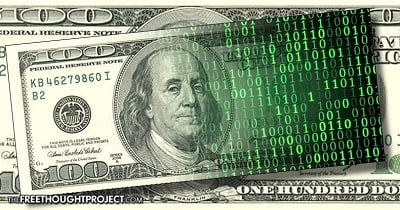The first indelible image of the war in Afghanistan for many Americans was probably that of CBS anchorman Dan Rather, wrapped in the voluminous drapery of a mujahedin fighter, looking like a healthy relative of Lawrence of Arabia (albeit with hair that seemed freshly blow-dried, as some viewers were quick to point out). From his secret mountainside “somewhere in the Hindu Kush,” Rather unloaded on his audience a barrowload of nonsense about the conflict. The Soviets, Rather confided portentously, had put a bounty on his head “of many thousands of dollars.” He went on, “It was the best compliment they could have given me. And having a price put on my head was a small price to pay for the truths we told about Afghanistan.”
Every one of these observations turned out to be entirely false. Rather described the government of Hafizullah Amin as a “Moscow-installed puppet regime in Kabul.” But Amin had closer ties to the CIA than he did to the KGB. Rather called the mujahedin the “Afghan freedom fighters … who were engaged in a deeply patriotic fight to the death for home and hearth.” The mujahedin were scarcely fighting for freedom, in any sense Rather would have been comfortable with, but instead to impose one of the most repressive brands of Islamic fundamentalism known to the world, barbarous, ignorant and notably cruel to women.
It was a “fact,” Rather announced, that the Soviets had used chemical weapons against Afghan villagers. This was a claim promoted by the Reagan administration, which charged that the extraordinarily precise number of 3,042 Afghans had been killed by this yellow chemical rain, a substance that had won glorious propaganda victories in its manifestation in Laos a few years earlier, when the yellow rain turned out to be bee feces heavily loaded with pollen. As Frank Brodhead put it in the London Guardian, “Its composition: one part bee feces, plus many parts State Department disinformation mixed with media gullibility.”
Rather claimed that the mujahedin were severely underequipped, doing their best with Kalashnikov rifles taken from dead Soviet soldiers. In fact the mujahedin were extremely well-equipped, being the recipients of CIA-furnished weapons in the most ” “expensive covert war the Agency had ever mounted. They did carry Soviet weapons, but they came courtesy of the CIA. Rather also showed news footage that he claimed was of Soviet bombers strafing defenseless Afghan villages. This footage was staged, with the “Soviet bomber” actually a Pakistani air force plane on a training mission over northwest Pakistan.
CBS claimed to have discovered in Soviet-bombed areas stuffed animals filled with Soviet explosives, designed to blow Afghan children to bits. These booby-trapped toys had in fact been manufactured by the mujahedin for the exclusive purpose of gulling CBS News, as an entertaining article in the New York Post later made clear.
Rather made his heroically filmed way to Yunas Khalis, described as the leader of the Afghan warriors. In tones of awe he normally reserves for hurricanes in the Gulf of Mexico, Rather recalls in his book, The Camera Never Blinks Twice, “Belief in ‘right’ makes ‘might’ may have been fading in other parts of the world. In Afghanistan it was alive and well, and beating the Soviets.” Khalis was a ruthless butcher, with his troops fondly boasting of their slaughter of 700 prisoners of war. He spent most of his time fighting, but the wars were not primarily with the Soviets. Instead, Khalis battled other Afghan rebel groups, the object of the conflicts being control of poppy fields and the roads and trails from them to his seven heroin labs near his headquarters in the town of Ribat al Ali. Sixty percent of Afghanistan’s opium crop was cultivated in the Helmand Valley, with an irrigation infrastructure underwritten by USAID.
In his dispatches from the front Rather did mention the local opium trade, but in a remarkably disingenuous fashion. “Afghans,” he said, “had turned Darra into a boom town, selling their home-grown opium for the best available weapons, then going back into Afghanistan to fight.”
Now Darra is a town in northwest Pakistan where the CIA had set up a factory to manufacture Soviet-style weapons that it was giving away to all Afghan comers. The weapons factory was run under contract to Pakistani Inter-Service Intelligence (ISI). Much of the opium trucked into Darra from Afghanistan by the mujahedin was sold to the Pakistani governor of the northwest territory, Lieutenant General Fazle Huq. From this opium the heroin was refined in labs in Darra, placed on Pakistani army trucks and transported to Karachi, then shipped to Europe and the United States.
Rather belittled the Carter administration’s reaction to the Soviet-backed coup in 1979, charging that Carter’s response had been tepid and slow in coming. In fact, President Carter had reacted with a range of moves that should have been the envy of the Reagan hawks who, a couple of years later, were belaboring him for being a Cold War wimp. Not only did Carter withdraw the United States from the 1980 Olympics, he slashed grain sales to the Soviet Union, to the great distress of Midwestern farmers; put the SALT II treaty hold; pledged to increase the US defense budget by 5 percent a year until the Soviets pulled out of Afghanistan; and unveiled the Carter doctrine of containment in southern Asia, which CIA historian John Ranelagh says led Carter to approve “more secret CIA operations than Reagan later did.”
Carter later confessed in his memoirs that he was more shaken by the invasion of Afghanistan than any other event of his presidency, including the Iranian revolution. Carter was convinced by the CIA that it could be the start of a push by the Soviets toward the Persian Gulf, a scenario that led the president to seriously consider the use of tactical nuclear weapons.
Three weeks after Soviet tanks rolled into Kabul, Carter’s secretary of defense, Harold Brown, was in Beijing, arranging for a weapons transfer from the Chinese to the CIA-backed Afghani troops mustered in Pakistan. The Chinese, who were generously compensated for the deal, agreed and even consented to send military advisers. Brown worked out a similar arrangement with Egypt to buy $15 million worth of weapons. “The US contacted me,” Anwar Sadat recalled shortly before his assassination. “They told me, ‘Please open your stores for us so that we can give the Afghans the armaments they need to fight.’ And I gave them the armaments. The transport of arms to the Afghans started from Cairo on US planes.”
But few in the Carter administration believed the rebels had any chance of toppling the Soviets. Under most scenarios, the war seemed destined to be a slaughter, with civilians and the rebels paying a heavy price. The objective of the Carter doctrine was more cynical. It was to bleed the Soviets, hoping to entrap them in a Vietnam-style quagmire. The high level of civilian casualties didn’t faze the architects of covert American intervention. “I decided I could live with that,” recalled Carter’s CIA director Stansfield Turner.
Prior to the Soviet invasion, Afghanistan barely registered as a topic of interest for the national press, surfacing in only a handful of annual newspaper stories. In December 1973, when détente was near its zenith, the Wall Street Journal ran a rare front-page story on the country, titled “Do the Russians Covet Afghanistan? If so, It’s Hard to Figure Why.” Reporter Peter Kann, later to become the Journal’s chairman and publisher, wrote that “great power strategists tend to think of Afghanistan as a kind of fulcrum upon which the world balance of power tips. But from close up, Afghanistan tends to look less like a fulcrum or a domino or a steppingstone than like a vast expanse of desert waste with a few fly-ridden bazaars, a fair number of feuding tribes and a lot of miserably poor people.”
After the Soviet Union invaded, this wasteland swiftly acquired the status of a precious geopolitical prize. A Journal editorial following the Soviet takeover said Afghanistan was “more serious than a mere stepping-stone” and, in response, called for stationing of US troops in the Middle East, increased military outlays, expanded covert operations and reinstatement of draft registration. Drew Middleton, then a New York Times Defense Department correspondent, filed a tremulous post-invasion analysis in January 1980: “The conventional wisdom in the Pentagon,” he wrote, “is that in purely military terms, the Russians are in a far better position vis-à-vis the United States than Hitler was against Britain and France in 1939.”
The Pentagon and CIA agitprop machine went into high gear: on January 3, 1980, George Wilson of the Washington Post reported that military leaders hoped the invasion would “help cure the Vietnam “never again’ hangover of the American public.” Newsweek said the “Soviet thrust” represented “a severe threat” to US interests: “Control of Afghanistan would put the Russians within 350 miles of the Arabian Sea, the oil lifeline of the West and Japan. Soviet warplanes based in Afghanistan could cut the lifeline at will.” The New York Times endorsed Carter’s call for increased military spending and supported the Cruise and Trident missile programs, “faster research on the MX or some other mobile land missile,” and the creation of a rapid deployment force for Third World intervention, calling the latter an “investment in diplomacy.”
In sum, Afghanistan proved to be a glorious campaign for both the CIA and Defense Department, a dazzling offensive in which waves of credulous and compliant journalists were dispatched to promulgate the ludicrous proposition that the United States was under military threat. By the time Reagan assumed office, he and his CIA director William Casey saw support for their own stepped-up Afghan plan from an unlikely source, the Democrat-controlled Congress, which was pushing to double spending on the war. “It was a windfall [for the Reagan administration],” a congressional staffer told the Washington Post. “They’d faced so much opposition to covert action in Central America and here comes the Congress helping and throwing money at them, putting money their way and they say, ‘Who are we to say no?’ ”
As the CIA increased its backing of the mujahedin (the CIA budget for Afghanistan finally reached $3.2 billion, the most expensive secret operation in its history) a White House member of the president’s Strategic Council on Drug Abuse, David Musto, informed the administration that the decision to arm the mujahedin would misfire: “I told the Council that we were going into Afghanistan to support the opium growers in their rebellion against the Soviets. Shouldn’t we try to avoid what we’d done in Laos? Shouldn’t we try to pay the growers if they will eradicate their opium production? There was silence.”
After issuing this warning, Musto and a colleague on the council, Joyce Lowinson, continued to question US policy, but found their queries blocked by the CIA and the State Department. Frustrated, they then turned to the New York Times op-ed page and wrote, on May 22, 1980: “We worry about the growing of opium in Afghanistan or Pakistan by rebel tribesmen who apparently are the chief adversaries of the Soviet troops in Afghanistan. Are we erring in befriending these tribes as we did in Laos when Air America (chartered by the Central Intelligence Agency) helped transport crude opium from certain tribal areas?” But Musto and Lowinson met with silence once again, not only from the administration but from the press. It was heresy to question covert intervention in Afghanistan.
Later in 1980, Hoag Levins, a writer for Philadelphia Magazine, interviewed a man he identified as a “high level” law enforcement official in the Carter administration’s Justice Department and quoted him thus: “You have the administration tiptoeing around this like it’s a land mine. The issue of opium and heroin in Afghanistan is explosive … In the State of the Union speech, the president mentioned drug abuse but he was very careful to avoid mentioning Afghanistan, even though Afghanistan is where things are really happening right now … Why aren’t we taking a more critical look at the arms we are now shipping into gangs of drug runners who are obviously going to use them to increase the efficiency of their drug-smuggling operation?”
The DEA was well aware that the mujahedin rebels were deeply involved in the opium trade. The drug agency’s reports in 1980 showed that Afghan rebel incursions from their Pakistan bases into Soviet-held positions were “determined in part by opium planting and harvest seasons.” The numbers were stark and forbidding. Afghan opium production tripled between 1979 and 1982. There was evidence that by 1981 the Afghan heroin producers had captured 60 percent of the heroin market in Western Europe and the United States (these are UN and DEA figures).
In 1971, during the height of the CIA’s involvement in Laos, there were about 500,000 heroin addicts in the United States. By the mid- to late 1970s this total had fallen to 200,000. But in 1981 with the new flood of Afghan heroin and consequent low prices, the heroin addict population rose to 450,000. In New York City in 1979 alone (the year that the flow of arms to the mujahedin began), heroin-related drug deaths increased by 77 percent. The only publicly acknowledged US casualties on the Afghan battlefields were some Black Muslims who journeyed to the Hindu Kush from the United States to fight on the Prophet’s behalf. But the drug casualties inside the US from the secret CIA war, particularly in the inner cities, numbered in the thousands, plus untold social blight and suffering.
Since the seventeenth century opium poppies have been grown in the so-called Golden Crescent, where the highlands of Afghanistan, Pakistan and Iran all converge. For nearly four centuries this was an internal market. By the 1950s very little opium was produced in either Afghanistan or Pakistan, with perhaps 2,500 acres in these two countries under cultivation. The fertile growing fields of Afghanistan’s Helmand Valley, by the 1980s under intensive opium poppy cultivation, were covered with vineyards, wheat fields and cotton plantations.
In Iran, the situation was markedly different in the early 1950s. The country, dominated by British and US oil companies and intelligence agencies, was producing 600 tons of opium a year and had 1.3 million opium addicts, second only to China where, at the same moment, the western opium imperialists still held sway. Then, in 1953, Mohammed Mossadegh, Iran’s nationalist equivalent of China’s Sun Yat-sen, won elections and immediately moved to suppress the opium trade. Within a few weeks, US Secretary of State John Foster Dulles was calling Mossadegh a madman, and Dulles’s brother Allen, head of the CIA, dispatched Kermit Roosevelt to organize a coup against him. In August 1953 Mossadegh was overthrown, the Shah was installed by the CIA, and the oil and opium fields of Iran were once again in friendly hands. Production continued unabated until the assumption of power in 1979 of the Ayatollah Khomeini, at which point Iran had a very serious opium problem in terms of the addiction of its own population. Unlike the mujahedin chieftains, the Ayatollah was a strict constructionist of Islamic law on the matter of intoxicants: addicts and dealers faced the death penalty. Opium production in Iran dropped drastically.
In Afghanistan in the 1950s and 1960s, the relatively sparse opium trade was controlled by the royal family, headed by King Mohammed Zahir, The large feudal estates all had their opium fields, primarily to feed domestic consumption of the drug. In April 1978 a populist coup overthrew the regime of Mohammed Daoud, who had formed an alliance with the Shah of Iran. The Shah had shoveled money in Daoud’s direction – $2 billion on one report – and the Iranian secret police, the Savak, were imported to train Daoud’s internal security force. The new Afghan government was led by Noor Mohammed Taraki. The Taraki administration moved toward land reform, hence an attack on the opium-growing feudal estates. Taraki went to the UN, where he requested and received loans for crop substitution for the poppy fields.
Taraki also pressed hard against opium production in the border areas held by fundamentalists, since the latter were using opium revenues to finance attacks on the Afghan central government, which they regarded as an unwholesome incarnation of modernity that allowed women to go to school and outlawed arranged marriages and the bride price.
By the spring of 1979 the character of Dan Rather’s heroes, the mujahedin, was also beginning to emerge. The Washington Post reported that the mujahedin liked to “torture their victims by first cutting off their noses, ears and genitals, then removing one slice of skin after another.” Over that year the mujahedin evinced particular animosity toward westerners, killing six West Germans and a Canadian tourist and severely beating a US military attaché. It’s also ironic that in that year the mujahedin were getting money not only from the CIA but from Libya’s Moammar Qaddaffi, who sent $250,000 in their direction.
In the summer of 1979, over six months before the Soviets moved in, the US State Department produced a memorandum making clear how it saw the stakes, no matter how modern-minded Taraki might be, or how feudal the mujahedin: “The United States’ larger interest … would be served by the demise of the Taraki-Amin regime, despite whatever setbacks this might mean for future social and economic reforms in Afghanistan.” The report continued, “The overthrow of the DRA [Democratic Republic of Afghanistan] would show the rest of the world, particularly the Third World, that the Soviets’ view of the socialist course of history as being inevitable is not accurate.”
Hard pressed by conservative forces in Afghanistan, Taraki appealed to the Soviets for help, which they declined to furnish on the grounds that this was exactly what their mutual enemies were waiting for.
In September 1979 Taraki was killed in a coup organized by Afghan military officers. Hafizullah Amin was installed as president. He had impeccable western credentials, having been to Columbia University in New York and the University of Wisconsin. Amin had served as the president of the Afghan Students Association, which had been funded by the Asia Foundation, a CIA pass-through group, or front. After the coup Amin began meeting regularly with US Embassy officials at a time when the US was arming Islamic rebels in Pakistan. Fearing a fundamentalist, US-backed regime pressing against its own border, the Soviet Union invaded Afghanistan in force on December 27, 1979.
Then began the Carter-initiated CIA buildup that so worried White House drug expert David Musto. In a replication of what happened following the CIA-backed coup in Iran, the feudal estates were soon back in opium production and the crop-substitution program ended.
Because Pakistan had a nuclear program, the US had a foreign aid ban on the country. This was soon lifted as the waging of a proxy war in Afghanistan became prime policy. In fairly short order, without any discernible slowdown in its nuclear program, Pakistan became the third largest recipient of US aid worldwide, right behind Israel and Egypt. Arms poured into Karachi from the US and were shipped up to Peshawar by the National Logistics Cell, a military unit controlled by Pakistan’s secret police, the ISI. From Peshawar those guns that weren’t simply sold to any and all customers (the Iranians got 16 Stinger missiles, one of which was used against a US helicopter in the Gulf) were divvied out by the ISI to the Afghan factions.
Though the US press, Dan Rather to the fore, portrayed the mujahedin as a unified force of freedom fighters, the fact (unsurprising to anyone with an inkling of Afghan history) was that the mujahedin consisted of at least seven warring factions, all battling for territory and control of the opium trade. The ISI gave the bulk of the arms – at one count 60 percent – to a particularly fanatical fundamentalist and woman-hater Gulbuddin Hekmatyar, who made his public debut at the University of Kabul by killing a leftist student. In 1972 Hekmatyar fled to Pakistan, where he became an agent of the ISI. He urged his followers to throw acid in the faces of women not wearing the veil, kidnapped rival leaders, and built up his CIA-furnished arsenal against the day the Soviets would leave and the war for the mastery of Afghanistan would truly break out.
Using his weapons to get control of the opium fields, Hekmatyar and his men would urge the peasants, at gun point, to increase production. They would collect the raw opium and bring it back to Hekmatyar’s six heroin factories in the town of Koh-i-Soltan.
One of Hekmatyar’s chief rivals in the mujahedin, Mullah Nassim, controlled the opium poppy fields in the Helmand Valley, producing 260 tons of opium a year. His brother, Mohammed Rasul, defended this agricultural enterprise by stating, “We must grow and sell opium to fight our holy war against the Russian nonbelievers.” Despite this well-calculated pronouncement, they spent almost all their time fighting their fellow-believers, using the weapons sent them by the CIA to try to win the advantage in these internecine struggles. In 1989 Hekmatyar launched an assault against Nassim, attempting to take control of the Helmand Valley. Nassim fought him off, but a few months later Hekmatyar successfully engineered Nassim’s assassination when he was holding the post of deputy defense minister in the provisional post-Soviet Afghan government. Hekmatyar now controlled opium growing in the Helmand Valley.
American DEA agents were fully apprised of the drug running of the mujahedin in concert with Pakistani intelligence and military leaders. In 1983 the DEA’s congressional liaison, David Melocik, told a congressional committee, “You can say the rebels make their money off the sale of opium. There’s no doubt about it. These rebels keep their cause going through the sale of opium.” But talk about “the cause” depending on drug sales was nonsense at that particular moment. The CIA was paying for everything regardless. The opium revenues were ending up in offshore accounts in the Habib Bank, one of Pakistan’s largest, and in the accounts of BCCI, founded by Agha Hasan Abedi, who began his banking career at Habib. The CIA was simultaneously using BCCI for its own secret transactions.
The DEA had evidence of over forty heroin syndicates operating in Pakistan in the mid-1980s during the Afghan war, and there was evidence of more than 200 heroin labs operating in northwest Pakistan. Even though Islamabad houses one of the largest DEA offices in Asia, no action was ever taken by the DEA agents against any of these operations. An Interpol officer told the journalist Lawrence Lifschultz, “It is very strange that the Americans, with the size of their resources, and political power they possess in Pakistan, have failed to break a single case. The explanation cannot be found in a lack of adequate police work. They have had some excellent men working in Pakistan.” But working in the same offices as those DEA agents were five CIA officers who, so one of the DEA agents later told the Washington Post, ordered them to pull back their operations in Afghanistan and Pakistan for the duration of the war.
Those DEA agents were well aware of the drug-tainted profile of a firm the CIA was using to funnel cash to the mujahedin, namely Shakarchi Trading Company. This Lebanese-owned company had been the subject of a long-running DEA investigation into money laundering. One of Shakarchi’s chief clients was Yasir Musullulu, who had once been nabbed attempting to deliver an 8.5-ton shipment of Afghan opium to members of the Gambino crime syndicate in New York City. A DEA memo noted that Shakarchi mingled “the currency of heroin, morphine base, and hashish traffickers with that of jewelers buying gold on the black market and Middle Eastern arms traffickers.”
In May 1984 Vice President George Bush journeyed to Pakistan to confer with General Zia al Huq and other ranking members of the Pakistani regime. At the time, Bush was the head of President Reagan’s National Narcotics Border Interdiction System. In this latter function, one of Bush’s first moves was to expand the role of the CIA in drug operations. He gave the Agency primary responsibility in the use of, and control over, drug informants. The operational head of this task force was retired Admiral Daniel J. Murphy.
Murphy pushed for access to intelligence on drug syndicates but complained that the CIA was forever dragging its feet. “I didn’t win,” he said later to the New York Times. “I didn’t get as much effective participation from the CIA as I wanted.” Another member of the task force put it more bluntly, “The CIA could be of value, but you need a change of values and attitude. I don’t know of a single thing they’ve ever given us that was useful.”
Bush certainly knew well that Pakistan had become the source for most of the high-grade heroin entering Western Europe and the United States and that the generals with whom he was consorting were deeply involved in the drug trade. But the vice president, who proclaimed later that “I will never bargain with drug dealers on US or foreign soil,” used his journey to Pakistan to praise the Zia regime for its unflinching support for the War on Drugs. (Amid such rhetorical excursions he did find time, it has to be said, to extract from Zia a contract to buy $40 million worth of gas turbines made by the General Electric Co.)
Predictably, through the 1980s the Reagan and Bush administrations went to great lengths to pin the blame for the upswing in Pakistani heroin production on the Soviet generals in Kabul. “The regime maintains an absolute indifference to any measures to control poppy,” Reagan’s attorney general Edwin Meese declared during a visit to Islamabad in March 1986. “We strongly believe that there is actually encouragement, at least tacitly, over growing opium poppy.”
Meese knew better. His own Justice Department had been tracking the import of drugs from Pakistan since at least 1982 and was well aware that the trade was controlled by Afghan rebels and the Pakistani military. A few months after Meese’s speech in Pakistan, the US Customs Office nabbed a Pakistani man named Abdul Wali as he tried to unload more than a ton of hash and a smaller amount of heroin into the United States at Port Newark, New Jersey. The Justice Department informed the press that Wali headed a 50,000-member organization in northwest Pakistan – but Deputy Attorney General Claudia Flynn refused to reveal the group’s identity. Another federal official told the Associated Press that Wali was a top leader of the mujahedin.
It was also known to US officials that people on intimate terms with President Zia were making fortunes in the opium trade. The word “fortune” here is no exaggeration, since one such Zia associate had $3 billion in his BCCI accounts. In 1983, a year before George Bush’s visit to Pakistan, one of President Zia’s doctors, a Japanese herbalist named Hisayoshi Maruyama was arrested in Amsterdam packing 17.5 kilos of high-grade heroin manufactured in Pakistan out of Afghan opium. At the time of his arrest he was disguised as a boy scout.
Interrogated by DEA agents after his arrest, Maruyama said that he was just a courier for Mirza Iqbal Baig, a man whom Pakistani customs agents described as “the most active dope dealer in the country.” Baig was on close terms with the Zia family and other ranking officials in the government. He had twice been a target of the DEA, whose agents were told not to pursue investigations of him because of his ties to the Zia government. A top Pakistani lawyer, Said Sani Ahmed, told the BBC that this was standard procedure in Pakistan: “We may have evidence against a particular individual, but still our law-enforcing agencies cannot lay hands on such people, because they are forbidden to act by their superiors. The real culprits have enough money and resources. Frankly, they are enjoying some sort of immunity.”
Baig was one of the tycoons of the Pakistani city of Lahore, owning cinemas, shopping centers, factories and a textile mill. He wasn’t indicted on drug charges until 1992, after the fall of the Zia regime, when a US federal court in Brooklyn indicted him for heroin trafficking. The US finally exerted enough pressure on Pakistan to have him arrested in 1993; as of the spring of 1998 he was in prison in Pakistan.
One of Baig’s partners (as described in Newsweek) in his drug business was Haji Ayub Afridi, a close ally of President Zia, who had served in the Pakistani General Assembly. Afridi lives thirty-five miles outside Peshawar in a large compound sealed off by 20-foot-high walls topped with concertina-wire and with defenses including an anti-aircraft battery and a private army of tribesmen. Afridi was said to be in charge of purchasing raw opium from the Afghan drug lords, while Baig looked after logistics and shipping to Europe and the United States. In 1993 Afridi was alleged to have put out a contract on the life of a DEA agent working in Pakistan.
Another case close to the Zia government involved the arrest on drug charges of Hamid Hasnain, the vice president of Pakistan’s largest financial house, the Habib Bank. Hasnain’s arrest became the centerpiece of a scandal known as the “Pakistani League affair.” The drug ring was investigated by a dogged Norwegian investigator named Olyvind Olsen. On December 13, 1983 Norwegian police seized 3.5 kilos of heroin at Oslo airport in the luggage of a Pakistani named Raza Qureishi. In exchange for a reduced sentence Qureishi agreed to name his suppliers to Olsen, the narcotics investigator. Shortly after his interview with Qureishi, Olsen flew to Islamabad to ferret out the other members of the heroin syndicate. For more than a year Olsen pressured Pakistan’s Federal Investigate Agency (FIA) to arrest the three men Qureishi had fingered: Tahir Butt, Munawaar Hussain, and Hasnain. All were associates of Baig and Zia. It wasn’t until Olsen threatened to publicly condemn the FIA’s conduct that the Agency took any action: finally, on October 25, 1985 the FIA arrested the three men. When the Pakistani agents picked up Hasnain they were assailed with a barrage of threats. Hasnain spoke of “dire consequences” and claimed to be “like a son” to President Zia. Inside Hasnain’s suitcase FIA agents discovered records of the ample bank accounts of President Zia plus those of Zia’s wife and daughter.
Immediately after learning of Hasnain’s arrest, Zia’s wife, who was in Egypt at the time, telephoned the head of the FIA. The president’s wife imperiously demanded the release of her family’s “personal banker.” It turned out that Hasnain not only attended to the secret financial affairs of the presidential family, but also of the senior Pakistani generals, who were skimming money off the arms imports from the CIA and making millions from the opium traffic. A few days after his wife’s call, President Zia himself was on the phone to the FIA, demanding that the investigators explain the circumstances surrounding Hasnain’s arrest. Zia soon arranged for Hasnain to be released on bail pending trial. When Qureishi, the courier, took the stand to testify against Hasnain, the banker and his co-defendant hurled death threats against the witness in open court, prompting a protest from the Norwegian investigator, who threatened to withdraw from the proceedings.
Eventually the judge in the case clamped down, revoking Hasnain’s bail and handing him a stiff prison term after his conviction. But Hasnain was just a relatively small fish who went to prison while guilty generals went free. “He’s been made a scapegoat,” Munir Bhatti told journalist Lawrence Lifschultz, “The CIA spoiled the case. The evidence was distorted. There was no justification in letting off the actual culprits who include senior personalities in this country. There was evidence in this case identifying such people.”
Such were the men to whom the CIA was paying $3.2 billion a year to run the Afghan war, and no person better epitomizes this relationship than Lieutenant General Fazle Huq, who oversaw military operations in northwest Pakistan for General Zia, including the arming of the mujahedin who were using the region as a staging area for their raids. It was Huq who ensured that his ally Hekmatyar received the bulk of the CIA arms shipments, and it was also Huq who oversaw and protected the operations of the 200 heroin labs within his jurisdiction. Huq had been identified in 1982 by Interpol as a key player in the Afghan-Pakistani opium trade. The Pakistani opposition leaders referred to Huq as Pakistani’s Noriega. He had been protected from drug investigations by Zia and the CIA and later boasted that with these connections he could get away “with blue murder.”
Like other narco-generals in the Zia regime, Huq was also on close terms with Agha Hassan Abedi, the head of the BCCI. Abedi, Huq and Zia would dine together nearly every month, and conferred several times with Reagan’s CIA director William Casey. Huq had a BCCI account worth $3 million. After Zia was assassinated in 1988 by a bomb planted (probably by senior military officers) in his presidential plane, Huq lost some of his official protection, and he was soon arrested for ordering the murder of a Shi’ite cleric.
After Prime Minister Benazir Bhutto was deposed, her replacement Ishaq Khan swiftly released Huq from prison. In 1991 Huq was shot to death, probably in revenge for the cleric’s death. The opium general was given a state funeral, where he was eulogized by Ishaq Khan as “a great soldier and competent administrator who played a commendable role in Pakistan’s national progress.”
Benazir Bhutto had swept to power in 1988 amid fierce vows to clean up Pakistan’s drug-sodden corruption, but it wasn’t long “before her own regime became the focus of serious charges. In 1989 the US Drug Enforcement Agency came across information that Benazir’s husband, Asif Ali Zardari, may have been financing large shipments of heroin from Pakistan to Great Britain and the United States. The DEA assigned one of its agents, a man named John Banks, to work undercover in Pakistan. Banks was a former British mercenary who had worked undercover for Scotland Yard in big international drug cases.
While in Pakistan, Banks claims he posed as a member of the Mafia and that he had met with Bhutto and her husband at their home in Sind. Banks further claims that he traveled with Zadari to Islamabad, where he secretly recorded five hours of conversation between Zadari, a Pakistani air force general and a Pakistani banker. The men discussed the logistics of transporting heroin to the US and to Britain: “We talked about how they were going to ship the drugs to America in a metal cutter,” Banks said in 1996. “They told me that the United Kingdom was another area where they had shipped heroin and hashish on a regular basis.” The British Customs Office had also been monitoring Zadari for dope running: “We received intelligence from about three or four sources, about his alleged involvement as a financier,” a retired British customs officer told the Financial Times. “This was all reported to British intelligence.” The customs official says his government failed to act on this report. Similarly, Banks asserts that the CIA halted the DEA’s investigation of Zardari. All this emerged when Bhutto’s government fell for the second time, in 1996, on charges of corruption lodged primarily against Zardari, who is now in prison for his role in the murder of his brother-in-law Murtaza. Zardari also stands accused of embezzling more than $1 billion in government funds.”
In 1991 Nawz Sharif says that while he served as prime minister he was approached by two Pakistani generals – Aslam Beg, chief of staff for the army, and Asad Durrani, head of the ISI – with a plan to fund dozens of covert operations through the sale of heroin. “General Durrani told me, ‘We have a blueprint ready for your approval,’ Sharif explained to Washington Post reporter John Ward Anderson in 1994. “I was totally flabbergasted. Both Beg and Durrani insisted that Pakistan’s name would not be cited at any place because the whole operation would be carried out by trustworthy third parties. Durrani then went on to list a series of covert military operations in desperate need of money.” Sharif said that he rejected the plan, but believes it was put in place when Bhutto resumed power.
The heroin crisis then and now is a direct consequence of the Military-Industrial Complex. During the 1970’s, around the same time during the Vietnam War, heroin made its way to the United States from the Golden Triangle which became an epidemic. It was estimated that more than 200,000 people in New York City alone were using heroin. At one point in time, you were able to find used syringes on public playgrounds. Now, heroin from Afghanistan has made its way back to the U.S. Heroin is profitable as much as it is strategic; it is also used as a weapon against Chinese, Iranian and Russian populations which has led to addiction, crime and helped spread diseases such as AIDS. Heroin is now affecting the United States, the CIA’s very own territory. Not that the CIA really cares who it effects when you closely examine their history of drug trafficking with the Iran-Contra Scandal or the Golden Triangle during the Vietnam War as author and activist William Blum noted in his book Rogue State,
“The CIA flew the drugs all over Southeast Asia, to sites where the opium was processed into heroin, and to trans-shipment points on the route to Western customers.”
The impact of the first Afghan war (1978-92) on Pakistan’s addiction rates was even more drastic than the surge in heroin addiction in the US and Europe. Before the CIA program began, there were fewer than 5,000 heroin addicts in Pakistan. By 1996, according to the United Nations, there were more than 1.6 million. The Pakistani representative to the UN Commission on Narcotics, Raoolf Ali Khan, said in 1993 that “there is no branch of government where drug corruption doesn’t pervade.” As an example he pointed to the fact that Pakistan spends only $1.8 million a year on anti-drug efforts, with an allotment of $1,000 to purchase gasoline for its seven trucks.
By 1994 the value of the heroin trade in Pakistan was twice the amount of the government’s budget. A Western diplomat told the Washington Post in that year that “when you get to the stage where narco-traffickers have more money than the government it’s going to take remarkable efforts and remarkable people to turn it around.” The magnitude of commitment required is illustrated by two episodes. In 1991 the largest drug bust in world history occurred on the road from Peshawar to Karachi. Pakistani customs officers seized 3.5 tons of heroin and 44 tons of hashish. Several days later half the hashish and heroin had vanished along with the witnesses. The suspects, four men with ties to Pakistani intelligence, had “mysteriously escaped,” to use the words of a Pakistani customs officer. In 1993 Pakistani border guards seized 8 tons of hashish and 1.7 tons of heroin. When the case was turned over to the Pakistani narcotics control board, the entire staff went on vacation to avoid being involved in the investigation. No one was disciplined or otherwise inconvenienced and the narco-traffickers got off scot free. Even the CIA was eventually forced to admit in a 1994 report to Congress that heroin had become the “life blood of the Pakistani economy and political system.”
In February 1989 Mikhail Gorbachev pulled the Soviet troops out of Afghanistan, and asked the US to agree to an embargo on the provision of weapons to any of the Afghan mujahedin factions, who were preparing for another phase of internecine war for control of the country. President Bush refused, thus ensuring a period of continued misery and horror for most Afghans. The war had already turned half the population into refugees, and seen 3 million wounded and more than a million killed. The proclivities of the mujahedin at this point are illustrated by a couple of anecdotes. The Kabul correspondent of the Far Eastern Economic Review reported in 1989 the mujahedin’s treatment of Soviet prisoners: “One group was killed, skinned and hung up in a butcher’s shop. One captive found himself the center of attraction in a game of buzkashi, that rough-and-tumble form of Afghan polo in which a headless goat is usually the ball. The captive was used instead. Alive. He was literally torn to pieces.” The CIA also had evidence that its freedom fighters had doped up more than 200 Soviet soldiers with heroin and locked them in animal cages where, the Washington Post reported in 1990, they led “lives of indescribable horror.”
In September 1996 the Taliban, fundamentalists nurtured originally in Pakistan as creatures of both the ISI and the CIA, seized power in Kabul, whereupon Mullah Omar, their leader, announced that all laws inconsistent with the Muslim Sharia would be changed. Women would be forced to assume the chador and remain at home, with total segregation of the sexes and women kept out of hospitals, schools and public bathrooms. The CIA continued to support these medieval fanatics who, according to Emma Bonino, the European Union’s commissioner for humanitarian affairs, were committing “gender genocide.”
One law at odds with the Sharia that the Taliban had no apparent interest in changing was the prophet’s injunction against intoxicants. In fact, the Taliban urged its Afghan farmers to increase their production of opium. One of the Taliban leaders, the “drug czar” Abdul Rashid, noted, “If we try to stop this [opium farming] the people will be against us.” By the end 1996, according to the UN, Afghan opium production had reached 2,000 metric tons. There were an estimated 200,000 families in Afghanistan working in the opium trade. The Taliban were in control of the 96 percent of all Afghan land in opium cultivation and imposed a tax on opium production and a road toll on trucks carrying the crop.
In 1997 an Afghan opium farmer gave an ironic reply to Jimmy Carter’s brooding on whether to use nuclear weapons as part of a response to the Soviet invasion of Afghanistan in 1979. Amhud Gul told a reporter from the Washington Post, “We are cultivating this [that is, opium] and exporting this as an atom bomb.” CIA intervention had worked its magic once again. By 1994, Afghanistan, according to the UN drug control program had surpassed Burma as the world’s number one supplier of raw opium.1
The heroin epidemic today resembles the days when “Crack cocaine” became the major drug that destroyed communities across the United States and other parts of the world including the Caribbean that began in the early 1980’s. The Crack epidemic coincidentally began around the same time when the Iran-Contra Scandal was being exposed. U.S. cities such as Los Angeles, Miami and New York City experienced a rise in crime and disease.
According to an NBC affiliate report, state officials were set to declare a “public health emergency” in New Haven, Connecticut over the rise of heroin use which has resulted in two deaths:
Officials in New Haven on Friday were set to address a public health emergency declaration brought on by a rash of heroin overdoses in the city beginning Thursday. New Haven police said emergency responders saw at least 15 overdoses since Thursday afternoon, and possibly up to 22. At least two people have died. The city is warning residents that there is a batch of tainted, life-threatening heroin on the streets
In the suburbs of Long Island, NY, heroin use is an increasing problem. According to www.suburbanheroin.com a website devoted to the heroin epidemic on Long Island states that in 2012 – 2013 more than 242 people died from heroin use. Long Island is home to some of the wealthiest communities in New York State which goes to show that heroin is affecting all neighborhoods rich and poor. The NBC news report said that the CDC admitted that heroin has become an epidemic since 2002. In turn the number of heroin addicts in the US has increased dramatically. Is there a relationship?
“There were 189,000 heroin users in the US in 2001, before the US-NATO invasion of Afghanistan. By 2016 that number went up to 4,500,000 (2.5 million heroin addicts and 2 million casual users). Heroin deaths shot up from 1,779 in 2001 to 10,574 in 2014 as Afghan opium poppy fields metastasized from 7,600 hectares in 2001 (when the US-NATO War in Afghanistan began) to 224,000 hectares in 2016. (One hectare equals approximately 2.5 acres). Ironically, the so-called US eradication operation in Afghanistan has cost an estimated $8.5 billion in American taxpayer funds since the US-NATO-Afghan war started in October 2001.” ( See the article by Sibel Edmonds, August 22, 2017)
Now the question is why heroin use has dramatically increased since 2002? Maybe the U.S. invasion of Afghanistan in October 2001 after the September 11th attacks under the Bush regime had something to do with it? The main-stream media (MSM) establishment mouthpiece The Washington Post admitted in 2006 that heroin production in Afghanistan “broke all records” while under U.S. occupation:
Opium production in Afghanistan, which provides more than 90 percent of the world’s heroin, broke all records in 2006, reaching a historic high despite ongoing U.S.-sponsored eradication efforts, the Bush administration reported yesterday.
In addition to a 26 percent production increase over past year — for a total of 5,644 metric tons — the amount of land under cultivation in opium poppies grew by 61 percent. Cultivation in the two main production provinces, Helmand in the southwest and Oruzgan in central Afghanistan, was up by 132 percent
Washington claims that Mexico is the source of the heroin that is flooding U.S. streets “with 10,500 hectares under poppy cultivation in 2012” while Afghanistan had “224,000 hectares” according to the United Nations Office on Drugs and Crime (UNODC) in a 2014 report but the numbers tell a different story. Mexico’s heroin trade is small in comparison although it has been increasing its production capabilities.
However, not only heroin from Afghanistan is the major source for U.S. citizens, “BigPharma”, or the ‘corporate drug dealers’ who sell “legal drugs” also have a hand in the epidemic because they produce and sell ‘Opioids’ such asOxyContin and Percocet which is similar to heroin. Opioid medications are normally used as painkillers for broken bones, lacerations or post-surgery pain. However, abusing Opioids can also lead to heroin use.
The online news source The Huffington Post published an article titled ‘Ron Paul Had Accurate Conspiracy Theory: CIA Was Tied To Drug Traffickers’ highlights what the former Libertarian Presidential nominee Dr. Ron Paul said on the involvement of the CIA in the drug trade which was not a “Conspiracy Theory” but a fact when taking into consideration the Iran-Contra Scandal:
In 1988, while running for president on the Libertarian Party ticket, he highlighted yet another conspiracy theory, and this one doesn’t collapse under investigation: The CIA, Paul told a gathering of the National Organization for the Reform of Marijuana Laws, was involved in trafficking drugs as part of the Iran-Contra debacle.
Drug trafficking is “a gold mine for people who want to raise money in the underground government in order to finance projects that they can’t get legitimately. It is very clear that the CIA has been very much involved with drug dealings,” Paul said. “The CIA was very much involved in the Iran-Contra scandals. I’m not making up the stories; we saw it on television. They were hauling down weapons and drugs back. And the CIA and government officials were closing their eyes, fighting a war that was technically illegal”
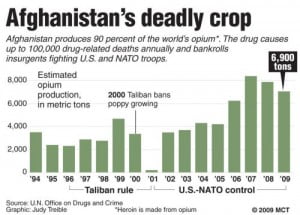 The Taliban banned the production of opium in 2000. The War in Afghanistan was mainly about producing opium which did end up in the streets of Iran, Russia and China. According to a Pravda report in 2015 by William Edstrom titled ‘Heroin Dealer in Chief. Afghanistan, Source of 90% of The World’s Heroin’ stated the impact of Afghanistan’s opium production on neighboring countries:
The Taliban banned the production of opium in 2000. The War in Afghanistan was mainly about producing opium which did end up in the streets of Iran, Russia and China. According to a Pravda report in 2015 by William Edstrom titled ‘Heroin Dealer in Chief. Afghanistan, Source of 90% of The World’s Heroin’ stated the impact of Afghanistan’s opium production on neighboring countries:
Afghanistan, source of 90% of Earth’s heroin, ended 90% of Earth’s heroin problems when Taliban outlawed opium in 2000. The reason for War in Afghanistan was because Taliban outlawed opium growing which ended economic wars (opium wars) against Iran, Russia and China
The heroin epidemic is now affecting cities and towns across the U.S. Edstrom estimates that 165,000 American’s will die from the heroin epidemic in the next 10 years:
The War in Afghanistan began as an opium war against Iran, Russia and China, the tables are turning into an opium war against Americans on track to kill 165,000 Americans (2016-2026). Americans, 5% of Earth’s population, take 60% of painkillers on Earth
The death rate could go much higher considering the increasing level of poverty in the U.S. especially in the inner cities where the highest unemployment rates is among the 18-34 year olds. Many young adults will unfortunately turn to the drug trade whether they sell or use as hope fades for the lack of jobs or opportunities.
Fox News had a segment with Geraldo Rivera that shows how the U.S. government (in this case, the U.S. Marines) is involved in Afghanistan’s heroin production with Washington’s approval, of course.
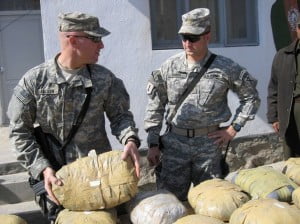 Heroin is a valuable commodity as long as the War on Drugs remains in effect, that’s why Obama extended the Afghan mission until 2017, for the next U.S. elected president to occupy the White House. If it’s Hillary Clinton, U.S. troops will remain in Afghanistan indefinitely. Trump might do the same, but that still remains to be seen. On July 7th, 2015 NBC reported on Afghanistan’s opium production and where they stand in terms of world supply
Heroin is a valuable commodity as long as the War on Drugs remains in effect, that’s why Obama extended the Afghan mission until 2017, for the next U.S. elected president to occupy the White House. If it’s Hillary Clinton, U.S. troops will remain in Afghanistan indefinitely. Trump might do the same, but that still remains to be seen. On July 7th, 2015 NBC reported on Afghanistan’s opium production and where they stand in terms of world supply
“According to the United Nations, the war-torn nation provides 90 percent of the world’s supply of opium poppy, the bright, flowery crop that transforms into one of the most addictive drugs in existence.”NBC also quoted John Sopko, the Special Inspector General for Afghanistan Reconstruction who did say that “Afghanistan has roughly 500,000 acres, or about 780 square miles, devoted to growing opium poppy. That’s equivalent to more than 400,000 U.S. football fields — including the end zones.”
That’s a large amount of land devoted to opium production which provides an opportunity for the CIA to cash in on the illegal drug trade for their secret covert operations (which avoids public scrutiny) and re-establish a drug trade route to target the populations of China, Iran and Russia.
As long as the U.S. occupation of Afghanistan continues under the guise of establishing a democratic government, the flow of heroin will continue unabated. One question we should ask is “who owns the planes and the ships that transport 90% percent of the world’s heroin from Afghanistan to the rest of the world in the first place? It sure isn’t the Taliban.
Despite president Trump’s announced US troop withdrawals, the Afghan opium trade continues to be protected by US-NATO occupation forces on behalf of powerful financial interests. Afghanistan’s opium economy is a multibillion dollar operation which feeds the surge of the US heroin market which is currently the object of debate and public concern. It should be noted that the relationship between the surge in Afghanistan’s opium production and the US opioid crisis is more complex.
2021 Collapse Under Biden
With the August 2021 Taliban take over of major cities, it was clear that it was Amerian Democrat socialist leader Joe Biden who failed the Afghan war. With Billions spent by US in Afghanistan on the Afghan army, at the end, rather benefited the Taliban.
On July 8, 2021, Biden said from the White House, “I trust the capacity of the Afghan military, who is better trained, better equipped, and more competent in terms of conducting war,” “There’s going to be no circumstance where you’re going to see people being lifted off the roof of an embassy of the United States from Afghanistan.” The same month the Defense Department said it was providing the Afghan Air Force 35 Black Hawk helicopters and three A-29 Super Tucanos. The United States spent $83 billion equipping and training the Afghanistan National Defense and Security Forces (ANDSF), including $10 billion in aircraft and vehicles. Less than a month later several Black Hawks helicopters and other aircraft were seized by the Taliban. Many of the aircraft and helicopters are armed. These A-29 Super Tucanos can fire laser-guided and other types of bombs. The Afghan government also had 50 American-made MD-530 attack helicopters, which are armed with machine guns and rockets. The Afghan Air Force had UH-60 Black Hawks and Russian-made Mi-17 helicopters, as well as C-130 and Cessna transports, and a small fleet of armed Cessnas. Young men were beaten in the streets for wearing T-shirts and blue jeans.
Bodies lay strewn on the streets of Kandahar. It was a repetition of what the Taliban had done in all the other provinces to the forces that fought alongside Americans. Taliban atrocities included executions, even killing kids in front of their parents. Afghans became fearful of the brutal regime’s return. CNN reported that on July 12, 2021 the Taliban knocked on the door of a mother of four in a small village in northern Afghanistan. They were demanding food. The mother told them, “I am poor, how can I cook for you?” The Taliban beat her to death. In Takhar province, the Taliban shot and killed a woman when she went out in public without a burqa.
Once inside the city, the Taliban had all the records with names of everyone who served in the Ktah Khas (KKA) or Afghan Special Forces, and began a house-to-house search for them. The KKA counter-terrorism experts who were trained by and fought alongside Americans suffered the same fate others did in the provinces, and were summarily executed.
Taliban commanders, after capturing some of the provincial capitals, ordered local Imams to bring the lists of unmarried women aged from 12 to 45 for their soldiers to marry as they view them as ‘qhanimat’ or ‘spoils of war’. The Taliban intends to “distribute ” these kids and women among themselves as Jihadists consider them as a ‘prize’.
Not surprisingly, The Qatari pro-terror network Al Jazeera was given exclusive access to the presidential palace by Taliban. As in 9/11 atrocity, it was Arab-Islamic Palestinians who cheered on. This time Hamas officials.
Up to 40,000 Americans remained stranded in Afghanistan. At least 24 students from San Diego school district and 16 parents had tickets to fly out but were not able to get to the airport. The woke Pentagon and the State Department publicly stated that they did not know how many Americans were in the country, let alone where they were. People requesting the embassy’s help first received a message telling them to go to Kabul airport, followed by a warning not to go to the airport. Unaware of the State Department warning, the woke Pentagon sent out a message telling people it was all clear to travel to the airport. No one in the Biden socialist regime was fired for the bungling, incompetence, degradation of respect for America among allies and on a global scale, and pointless loss of life among innocents and people who served with the United States against Taliban inhumanity.
People who had worked for the Afghan government went into hiding, “awaiting their death sentence.”
The Biden regime gave the Taliban a list of names of American citizens, Afghan allies, green card holders, they wanted to evacuate.
“Basically, they just put all those Afghans on a kill list,” said one defense official, who like others spoke on condition of anonymity to discuss a sensitive topic. “It’s just appalling and shocking and makes you feel unclean,” according to Politico.
Red State reported:
“This is insane, since the Taliban is looking to kill anyone who worked with the U.S., and has beheaded and killed Afghan allies in the past. Why would you give them what amounts to a “kill list” or hostage list? They are our enemies.
Now, even if they don’t nab those allies at the airport, they will have their name and can hunt them down. It’s already been reported that the Taliban has been going house to house to hunt people down to kill them and their families and you give them a list?”
Panic ensued as the Kabul airport was flooded with people fleeing the Taliban terror. Some people were stampeded to death. Tens of thousands of Afghans lined up outside the airport in the hopes of finding a way out. People died after being crushed or succumbing to sweltering temperatures in the crowds outside the airport gate as individuals and families sought refuge from the Taliban. Sky News chief correspondent Stuart Ramsay saw people crushed to death, medics check their vital signs and then cover the bodies in white sheets. A heartbroken mother found her 2-year-old daughter trampled to death.
A sniper killed an Afghan army soldier alongside coalition forces at the airport.
Three young men clung to the tires of an airplane, only to fall on top of people’s houses once the plane was airborne. Remains of a fourth body were found crushed inside the wheel well upon landing.
On August 25, 2021 the U.S. State Department and U.K. officials issued a warning to American and British citizens to leave the vicinity of the Kabul airport immediately.
On August 26, 2021, two suicide bombs went off outside the Kabul airport, killing 170 people including 13 American soldiers. It was the deadliest day in 10 years for Americans. One was a car bomb about 200 yards away, outside the Baron hotel, which was a staging area for evacuees from the airport. ISIS-K allegedly claimed responsibility. An Italian C-130 also came under fire as it departed the airport. A translator for the U.S. Marine Corps spoke with Fox News and gave a first-hand account of what he witnessed after the suicide attack.His 5-year-old girl died in his hands.
Several members of Congress called upon Biden to resign.
Sources:
- https://www.counterpunch.org/2020/07/10/i-could-live-with-that-how-the-cia-made-afghanistan-safe-for-the-opium-trade/
- http://silentcrownews.com/wordpress/?p=4915
- https://www.conservapedia.com/Afghan_War
Chronological History of Events Regarding to the War in Afghanistan
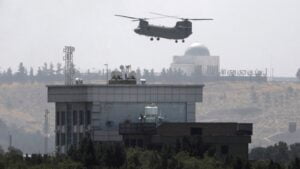
Fall of Afghanistan
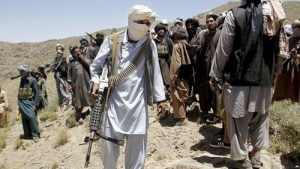
Report: Two Decades After 9/11, Pentagon Is Providing Covert Air Support To The Taliban

PsyOp? Falconer Alleges Hard Evidence that Biden, Obama, Hillary Executed Seal Team 6
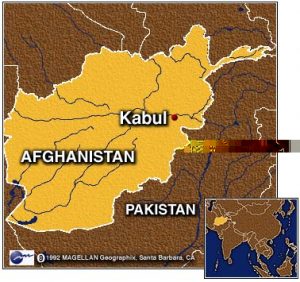
US, Afghan Forces Come Under ‘Direct Fire’ In Eastern Afghanistan
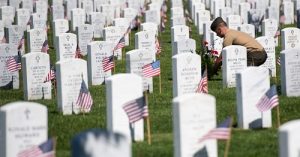
Classified Docs ‘Afghanistan Papers’ Give “Undeniable Evidence” Afghan War was a Mass Deception
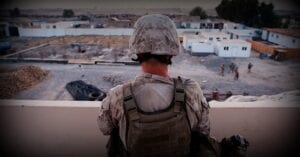
“Terrorizing the Populace”: Report Finds CIA-Backed Death Squads in Afghanistan Committing War Crimes, Atrocities

President Trump 2019 State of the Union Speech
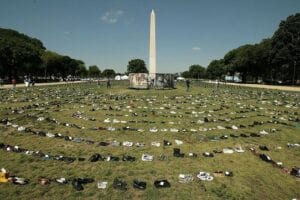
Brown University Study: 9/11 Wars In Iraq, Afghanistan, And Pakistan Killed 500,000 People
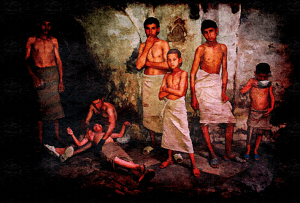
DynCorp’s Bacha Bazi, the “Dancing Boys” in Afghanistan



